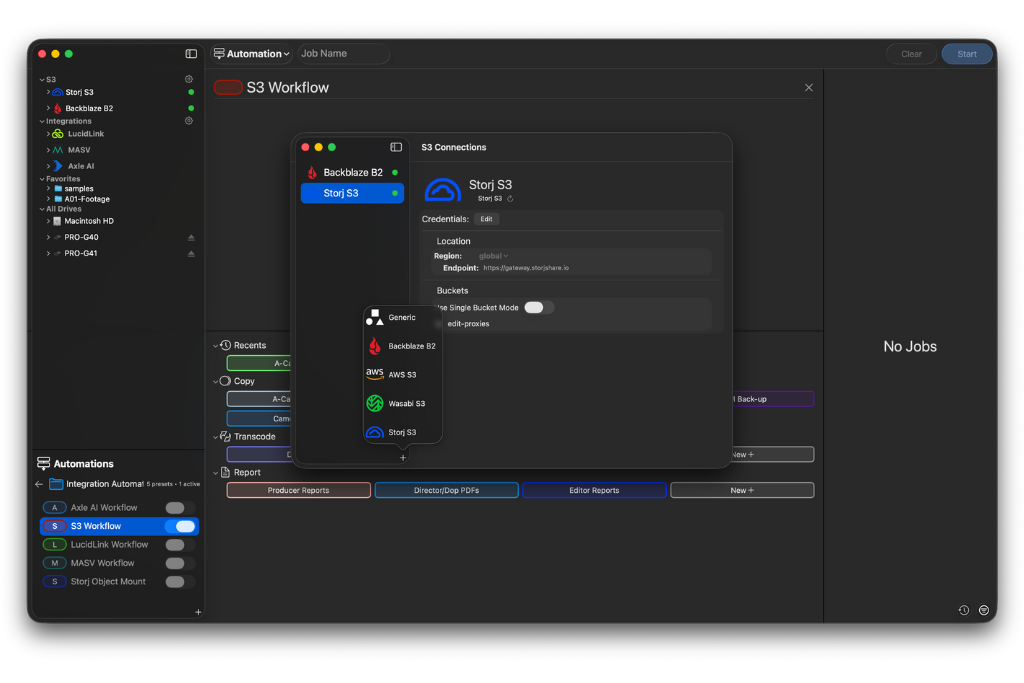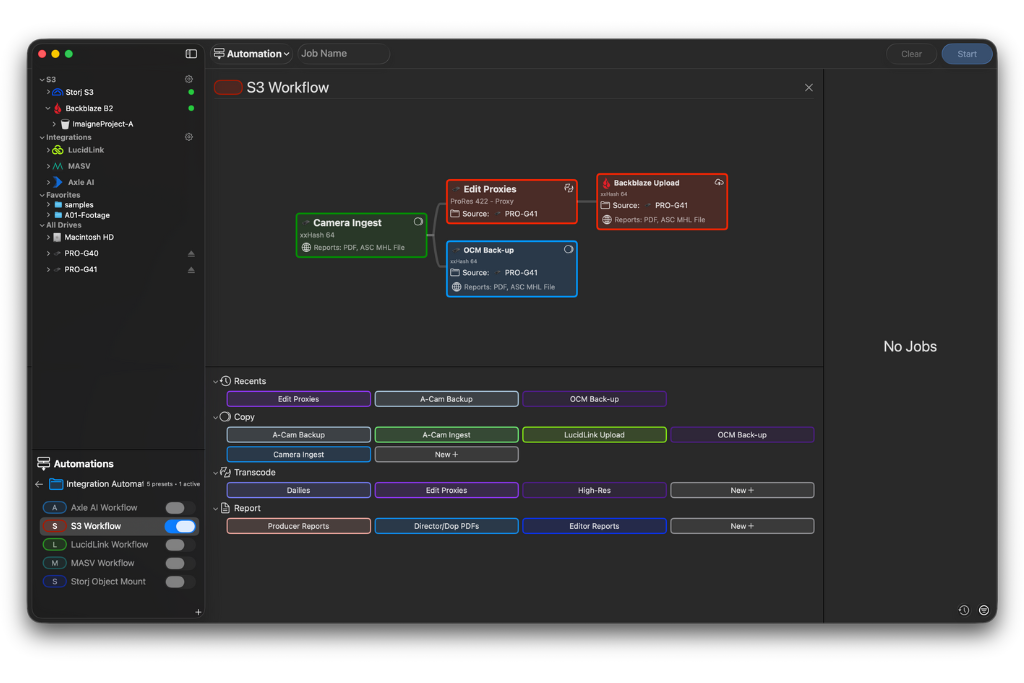
For modern productions, cloud delivery isn’t just convenient, it’s often essential. Whether it’s dailies going to post or backups heading to a secure remote location, sending media to the cloud helps teams stay connected wherever they’re working. The challenge is doing it reliably. Between fluctuating internet speeds, large camera files, and tight deadlines, productions need an upload process that’s both automated and resilient. That’s where ShotPut Studio’s S3 integrations come in.
Why Cloud Uploads Matter
Every production team faces the same pressure: footage needs to move quickly and safely from set to post. Traditionally, that meant offloading to a few hard drives and shipping them across town or across the country. Today, cloud storage provides an alternative that’s faster, safer, and often more cost-effective in the long run. Uploading to S3-compatible cloud providers allows verified media to be available for editing, color, or review almost immediately after offload.
But not every workflow is built for reliability. Interrupted uploads, mismatched folder structures, and unclear automation logic can slow everything down. A bulletproof workflow requires planning, starting with how data is verified and organized before it ever touches the cloud.
The Foundation: Ingest and Verification
Before any footage is uploaded, it needs to be copied from camera cards to a secure local destination. This is where ShotPut Pro and ShotPut Studio both play key roles. For productions that only need local verification and backup, ShotPut Pro provides an efficient way to copy and verify files across multiple drives. But when cloud delivery is part of the process, ShotPut Studio builds on that foundation by automating what happens next.

A typical setup might start with verified offloads to a fast SSD. This ensures that camera media is safely copied and ready for any additional steps like proxy transcodes or cloud uploads. The same workflow can also include simultaneous verified backups to slower external drives for redundancy. Each of these stages happens automatically, triggered by the availability of resources rather than manual intervention.
Connecting to S3 in ShotPut Studio
ShotPut Studio simplifies what used to be a complicated setup. To connect to S3-compatible storage, users select their provider from a built-in list, enter the access and secret keys, and link their bucket. Once connected, every S3 bucket appears in the software’s Connected Media List on the left-hand side. From there, users can drag and drop an entire bucket, or even a subfolder within it, into an automation preset as a destination.

Productions can connect as many S3 buckets as needed. Some may upload camera originals to one bucket while sending transcodes to another. Once the connections are in place, they become part of the same automation system that handles all other ingest tasks.
A Reliable, Automated Pipeline
Inside ShotPut Studio, users create copy presets that define how and where media should go. A copy preset might specify a destination, naming convention, and folder structure. When one of these destinations is an S3 bucket, the preset automatically handles the upload once the verified files are ready. Copy presets can be combined with other types, such as transcode or report presets, to build a complete workflow that runs hands-free.

Imagine a multi-camera production wrapping for the day. As cards are offloaded and verified to an SSD, ShotPut Studio immediately begins transcoding proxies and uploading them to S3 for the editorial team. At the same time, the original camera files are copied to slower backup drives and optionally uploaded to a secondary S3 bucket for safekeeping. Each step happens automatically as resources become available, ensuring maximum efficiency with minimal oversight.
Designing for Efficiency
The key to building a bulletproof S3 workflow is understanding how each step supports the next. Start fast, stay organized, and deliver securely. Local SSDs provide the speed needed for ingest and transcode, while cloud storage ensures long-term accessibility and collaboration. By combining these elements in a single automation pipeline, ShotPut Studio eliminates redundant manual steps that can introduce human error.
Setting up this kind of workflow doesn’t require deep technical expertise. The interface makes it easy to see how destinations, presets, and automation triggers connect. The flexibility to use multiple S3 buckets, local drives, and transcoding presets in the same workflow means productions can design systems that fit their exact needs rather than forcing a one-size-fits-all approach.
Maintaining Reliability in the Cloud
Even the best cloud workflows can be tested by real-world conditions such as unreliable Wi-Fi, full storage buckets, or overlapping jobs. ShotPut Studio is designed to handle these challenges gracefully. For additional protection, productions can configure their automations to always create at least one verified local copy before uploading anything. This ensures that even if a cloud transfer fails, the footage remains safe on set.
The Payoff: Speed, Security, and Peace of Mind
When properly configured, S3-based workflows unlock new levels of flexibility. Footage can reach post teams in minutes rather than days, and redundant storage in the cloud adds a layer of security that physical drives alone can’t match. Automating these processes removes repetitive tasks and reduces the potential for mistakes, freeing up DITs and data wranglers to focus on the creative side of production.

ShotPut Studio gives productions of any size the tools to move beyond manual transfers and into a fully automated, cloud-ready workflow. With the right balance of local and cloud storage, teams can protect their footage, accelerate delivery, and collaborate seamlessly across locations.
Final Thoughts
Building a bulletproof workflow isn’t about complexity, it’s about trust. When every step from camera to cloud happens automatically and reliably, the production gains time, confidence, and control. S3 cloud uploads through ShotPut Studio make that possible, turning what used to be a logistical challenge into a dependable, repeatable process. For teams ready to simplify their offload-to-edit pipeline, this is where cloud efficiency truly begins.